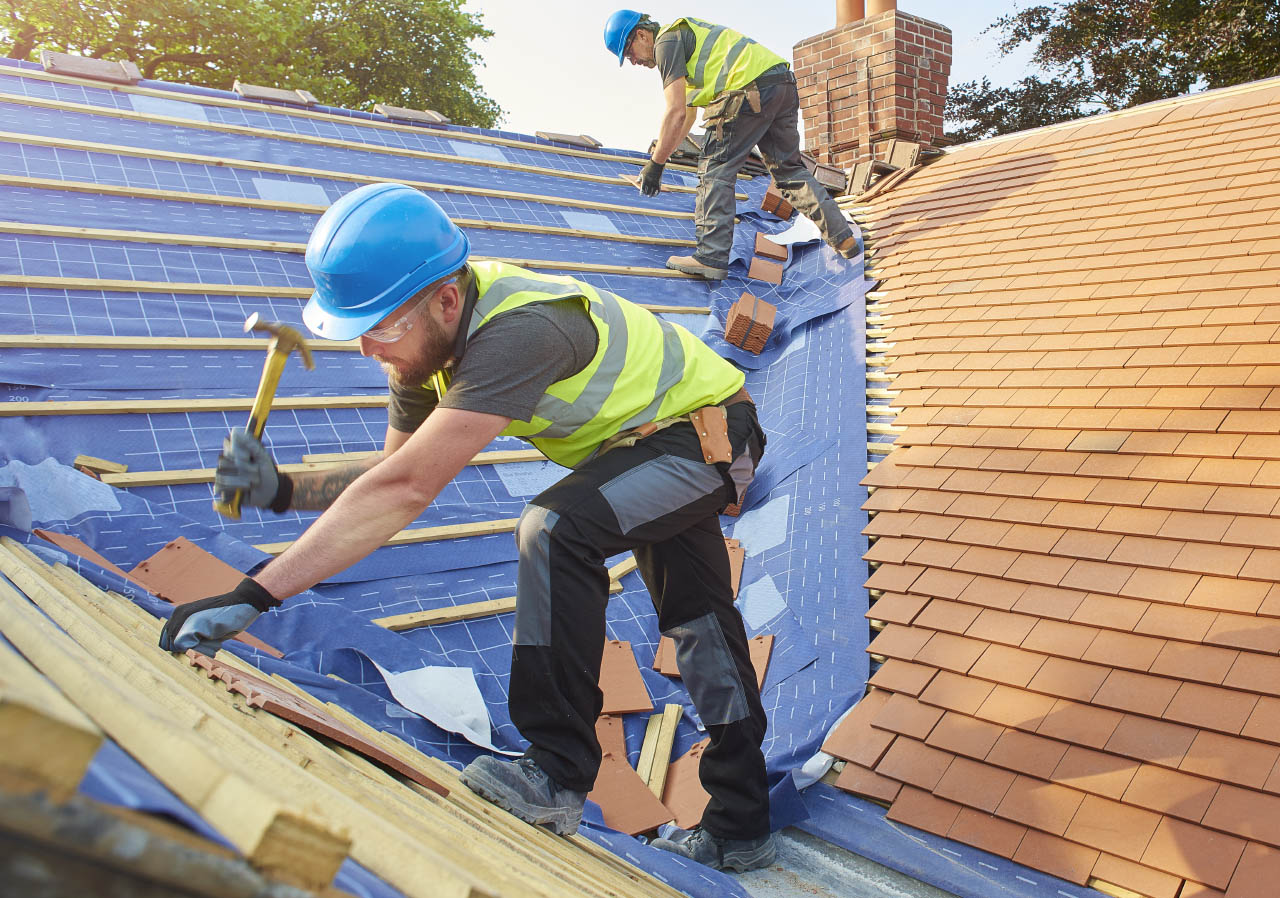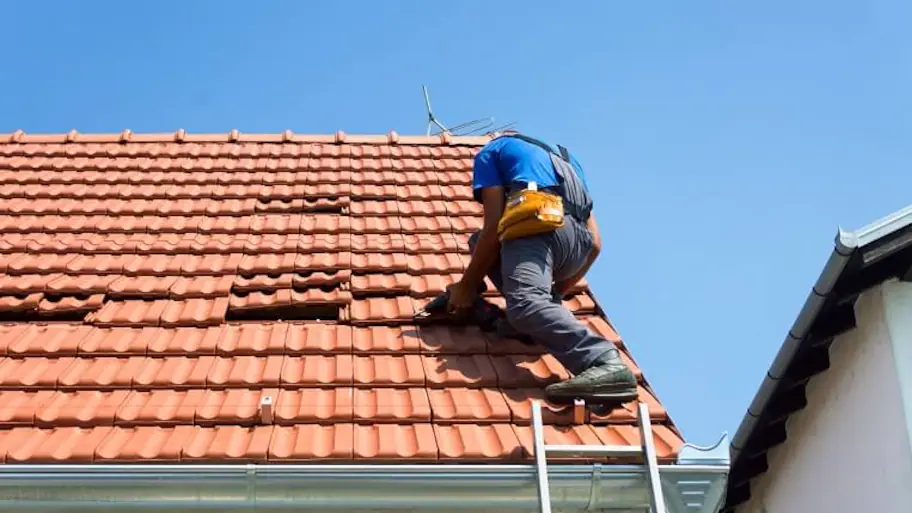Roof Repair Oahu: Quick and Affordable Roof Repairs Near You
Roof Repair Oahu: Quick and Affordable Roof Repairs Near You
Blog Article
Comprehending the Different Types of Roofings: A Comprehensive Guide for Homeowners
With an array of options-- varying from the conventional gable to the modern flat-- each type provides unique advantages and obstacles that should align with the house owner's environmental factors to consider and certain needs. As we check out the details of various roofing system kinds, it comes to be apparent that one dimension does not fit all; the best choice might stun you.
Gable Roofing Systems
Gable roofs, characterized by their triangular form, are amongst one of the most popular roof covering styles because of their simpleness and performance in losing water and snow. This layout includes 2 sloping sides that meet at a ridge, permitting reliable drain and lessening the danger of water accumulation. The steep pitch commonly related to saddleback roofs boosts their ability to take care of heavy precipitation, making them suitable for different climates.
Along with their sensible advantages, gable roofings supply visual versatility. They can be adapted to numerous building styles, from traditional to modern-day homes. The design can also fit additional functions such as dormer home windows, which improve natural light and air flow in the attic room area.
In addition, gable roof coverings offer enough room for insulation, contributing to power efficiency. House owners can pick from a selection of roof materials, consisting of asphalt tiles, metal, and ceramic tiles, even more boosting modification alternatives.
In spite of their benefits, saddleback roofs might need added support in areas prone to high winds or heavy snowfall. Generally, the gable roofing continues to be a preferred selection because of its mix of functionality, sturdiness, and aesthetic appeal.
Apartment Roofs
Level roof coverings are frequently acknowledged for their minimal style and useful applications, especially in commercial and industrial setups (oahu roofing). These roofings include a almost straight or horizontal surface, which allows for easy construction and functional room application. While they might do not have the visual appeal of angled roofs, level roofs supply various benefits, particularly in metropolitan atmospheres where taking full advantage of area is essential
Among the primary benefits of flat roofs is their availability. Property owners can utilize the roofing space for numerous objectives, such as rooftop gardens, terraces, or photovoltaic panel setups. In addition, flat roofing systems are typically much more economical to mount and preserve compared to their sloped equivalents, as they require fewer materials and labor.
Nonetheless, level roof coverings do present certain obstacles. Proper drain is vital to prevent water pooling, which can cause leaks and structural damage. Hence, picking top notch waterproofing materials and normal assessments are vital for guaranteeing longevity. Usual products used for level roofing systems include built-up roof (BUR), changed bitumen, and single-ply membrane layers, each offering distinct advantages. Overall, level roofings function as a adaptable and practical selection for lots of homeowners and organizations alike.
Hip Roofing Systems
Hip roofings are defined by their sloped sides that merge at the top, developing a ridge. This layout stands out from gable roof coverings, as all 4 sides of a hip roofing system incline downwards toward the wall surfaces, providing a more secure structure. The angle of the inclines can vary, enabling versatility in architectural aesthetics and functionality.
One of the key advantages of hip roof coverings is their capability to endure hefty winds and adverse weather. The sloped surface areas allow far better water drainage, minimizing the danger of leaks and water damages. Furthermore, hip roof coverings use increased attic area, which can be utilized for storage space or perhaps exchanged habitable locations.
However, constructing a hip roofing can be a lot more complicated and pricey than easier roof kinds, such as gable roofs. The additional product and labor associated with producing the inclines and guaranteeing correct structural honesty can bring about higher expenditures. Despite these downsides, lots of homeowners favor check that hip roofing systems for their durability, aesthetic allure, and capacity for energy efficiency.
Mansard Roofing Systems
Mansard roofs, typically recognized by their unique four-sided design, attribute two slopes on each side, with the lower incline being steeper than the upper. This architectural style, stemming from France in the 17th century, is not just visually appealing but functional, as it takes full advantage of the usable area in the top floors of a building. The high reduced slope permits even more headroom, making it an optimal option for lofts or attics, which can be exchanged living spaces.
Mansard roofing systems are identified by their flexibility, suiting various building designs, from standard to modern. They can be created with different products, including asphalt roof shingles, slate, or steel, offering homeowners with an array of alternatives to fit their choices and spending plans. In addition, the style permits the combination of dormer windows, enhancing natural light and ventilation in the upper degrees.
However, it is necessary to take into consideration the potential disadvantages. Mansard roofing systems might need even more maintenance because of the intricacy of their design, and their high inclines can be testing for snow and rainfall drainage. On the whole, mansard roofings integrate sophistication with practicality, making them a popular selection among home owners looking for distinctive architectural features.
Dropped Roof Coverings
As house owners significantly look for simpleness and functionality in their building styles, dropped roof coverings have become a prominent choice. Defined by a solitary sloping aircraft, a shed roof covering presents a minimal visual that enhances different home designs, from contemporary to rustic.
Among the primary advantages of a shed roof is its straightforward building and construction, which usually translates to reduce labor and product expenses. This style permits effective water drain, decreasing the risk of leaks and water damage. Furthermore, the upright incline supplies sufficient space for skylights, improving natural light within the interior.
Shed roof coverings likewise provide flexibility in terms of usage. They can be properly incorporated into additions, garages, or outdoor frameworks like pavilions and sheds. Moreover, this roof covering style can suit various roof covering products, including metal, asphalt shingles, or even environment-friendly roofs, lining up with environment-friendly initiatives.
Nevertheless, it is vital to consider local environment problems, as hefty snow loads might require adjustments to the roof covering's angle or structure. On the whole, lost roofing systems present a useful and visually pleasing alternative for property owners aiming to make best use of performance without compromising style.
Verdict


Gable roofing systems, identified by their triangular shape, are among the most preferred roof styles due to their simpleness and performance in dropping water and snow. oahu roofing. The steep pitch commonly linked with gable roof coverings enhances their capacity to take care a fantastic read of hefty rainfall, making them ideal for numerous environments
While they may do not have the visual allure of pitched roofing systems, flat roofs supply various advantages, particularly in urban environments where taking full advantage of space is essential.

Report this page